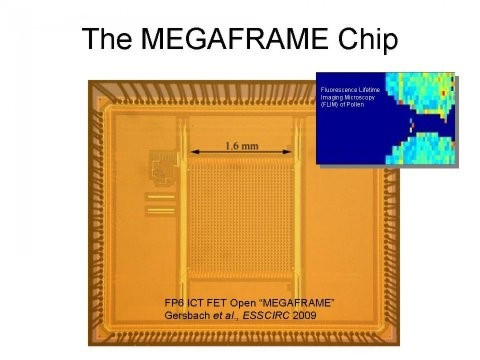Researchers Develop Ultrafast Camera For Biosensing

European researchers have shown that the world's fastest camera - Megaframe Imager - could potentially be a powerful technology in biosensing.
A European consortium has been involved in the development and application of the Megaframe Imager, which is capable of recording images at the incredible rate of one million frames per second. This is forty thousand times faster than standard digital video. The camera is also sensitive enough to detect single photons of light.
The time-correlated single photon camera uses an extremely sensitive single photon avalanche diode (SPAD) device built on CMOS technology.
The researchers report fluorescence lifetime data obtained using a CMOS-SPAD imager in conjunction with DNA microarrays.
According to the researchers, DNA microarrays are important tools for biomolecular detection and are widely used for gene expression profiling, disease screening, mutation and forensic analysis. They also hold much promise for the future development of personalized drugs and point of care testing devices.
Recently, fluorescence lifetime imaging (FLIM) has been reported as a powerful multidimensional technique that offers a number of benefits for microarray reading in term of sensitivity, specificity and multiplexing capabilities.
The researchers showed fast FLIM detection at low fluorophore concentrations relevant to DNA binding assays using a CMOS-SPAD array camera.
They demonstrated detection of viral DNA binding events using FLIM at the very low target concentrations relevant in biosensing applications with less than 30 seconds exposure time.
The Megaframe project under execution was conceived in the summer of 2004 in response to the growing interest of the scientific and engineering community in low-cost techniques for single photon counting. The target fields are biology, physics, and medical imaging.
Researchers are currently exploring the possibility of applying this device in cellular/sub-cellular imaging, neural imaging, biochemical sensors, DNA/ protein microarray scannin, automotive collision studies and high-sensitivity astronomical observations.
The consortium includes National Physics Laboratory, ST Microelectronics, the University of Edinburgh, and TU Delft.
© Copyright IBTimes 2025. All rights reserved.





















